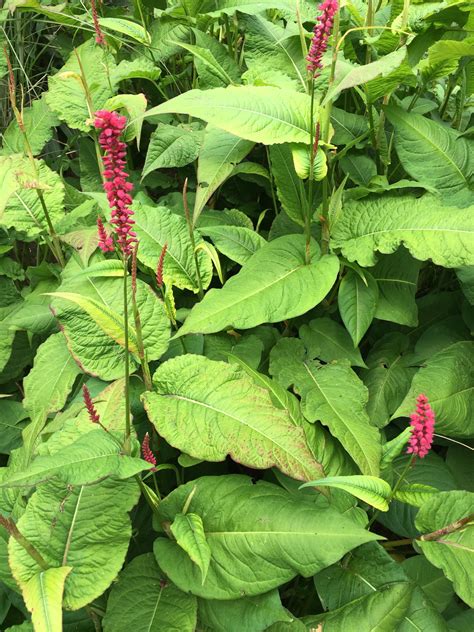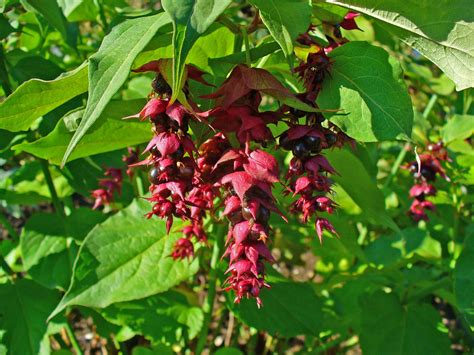what plants are similar to japanese knotweed ,does japanese knotweed have berries,what plants are similar to japanese knotweed, Japanese knotweed is an invasive plant that can cause serious damage and legal issues if found on your property. But identifying it correctly can be tricky, as many other plants share similar traits. Here are the most common . 1. The Rolex Daytona (Steel) The Rolex Daytona in steel is one of the most if not the most popular Rolex models there is. Waiting lists have been said to exceed 10 years! But .

Japanese Knotweed (Reynoutria japonica) is a notorious and highly invasive plant species that has been causing significant environmental and economic damage across many parts of the world. While it’s a well-known nuisance, it’s often confused with other plants that share similar characteristics in appearance or growth habit. For anyone looking to identify Japanese Knotweed and its lookalikes, understanding the distinct features of this plant and comparing them with other species is essential. This article will explore plants that resemble Japanese Knotweed, including common examples like Giant Knotweed, Dogwood, Buckwheat, and Elderberry. Additionally, we will cover key topics like identifying Japanese Knotweed, its characteristics, and some of the common misconceptions associated with it.
Understanding Japanese Knotweed
Japanese Knotweed is an aggressive perennial that belongs to the buckwheat family, commonly found in disturbed habitats such as riverbanks, roadsides, and urban environments. Its rapid growth and ability to spread through rhizomes (underground stems) make it a challenge to control once established. The plant can grow up to 10 feet tall and has distinctive features such as hollow, bamboo-like stems, large heart-shaped leaves, and clusters of tiny white flowers.
One of the key challenges with identifying Japanese Knotweed is its resemblance to other plants, particularly those in the buckwheat family or those that share similar growth forms.
# Does Japanese Knotweed Have Berries?
No, Japanese Knotweed does not produce berries. Instead, it produces small, creamy-white flowers that form in dense clusters during the late summer and fall months. These flowers can be confused with other flowering plants that produce similar small, clustered blooms. Unlike some plants, Japanese Knotweed does not rely on berries or fruits to propagate; it primarily spreads through its underground rhizome system, which can regenerate even if the plant is cut down or disturbed.
How to Identify Japanese Knotweed
Identifying Japanese Knotweed is crucial for controlling its spread, and its appearance can vary depending on the season. Here’s a detailed guide to recognizing this invasive species:
1. Stem: Japanese Knotweed has hollow, bamboo-like stems that are reddish in color when young. As the plant matures, the stems become more rigid and greenish, with distinct purple speckles.
2. Leaves: The leaves are large (up to 7 inches in length), heart-shaped, and alternately arranged along the stem. They are bright green, with a slightly jagged edge.
3. Flowers: The plant produces small, creamy-white flowers in late summer and autumn, which form in panicles (loose clusters).
4. Rhizomes: The root system is extensive, and the rhizomes (underground stems) can extend several feet in all directions, making it easy for the plant to spread rapidly.
5. Height: Japanese Knotweed can grow quite tall, reaching heights of 8–10 feet during the growing season.
Identifying Japanese Knotweed UK
In the UK, Japanese Knotweed has become a significant concern due to its impact on building foundations, infrastructure, and natural habitats. Identifying the plant in the UK follows similar guidelines as elsewhere, but it’s essential to be aware that it thrives in a wide range of environments, including urban areas, along riverbanks, and even on roadsides.
The UK government has strict regulations concerning the disposal and control of Japanese Knotweed, and recognizing it early can help mitigate its spread. A Japanese Knotweed Identification Sheet is available through various environmental and ecological agencies in the UK, which helps homeowners and landowners to accurately identify the plant and take the necessary steps to control its spread.
Pictures of Japanese Knotweed Plants
If you are unsure whether a plant is Japanese Knotweed, it’s helpful to compare it with photographs of confirmed specimens. Many websites and environmental organizations offer online resources that provide detailed images of Japanese Knotweed at different stages of growth.
Plants That Resemble Japanese Knotweed
Given its distinctive features, Japanese Knotweed can be confused with several other plants, particularly those that share a similar growth form or are related in the same botanical family. Here are some of the most common plants that resemble Japanese Knotweed:
# 1. Giant Knotweed (Fallopia sachalinensis)

what plants are similar to japanese knotweed Get the best deals on Rolex Datejust Vintage Wristwatches when you shop the largest online selection at eBay.com. Free shipping on many items | Browse your favorite brands | affordable .
what plants are similar to japanese knotweed - does japanese knotweed have berries